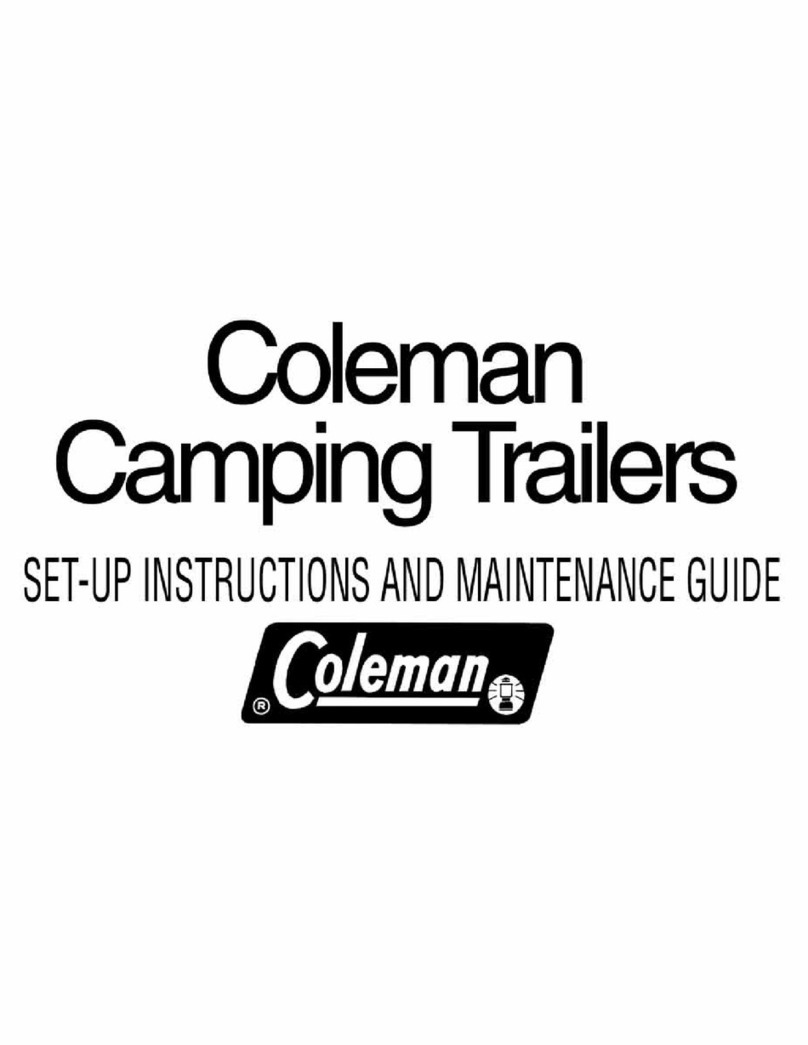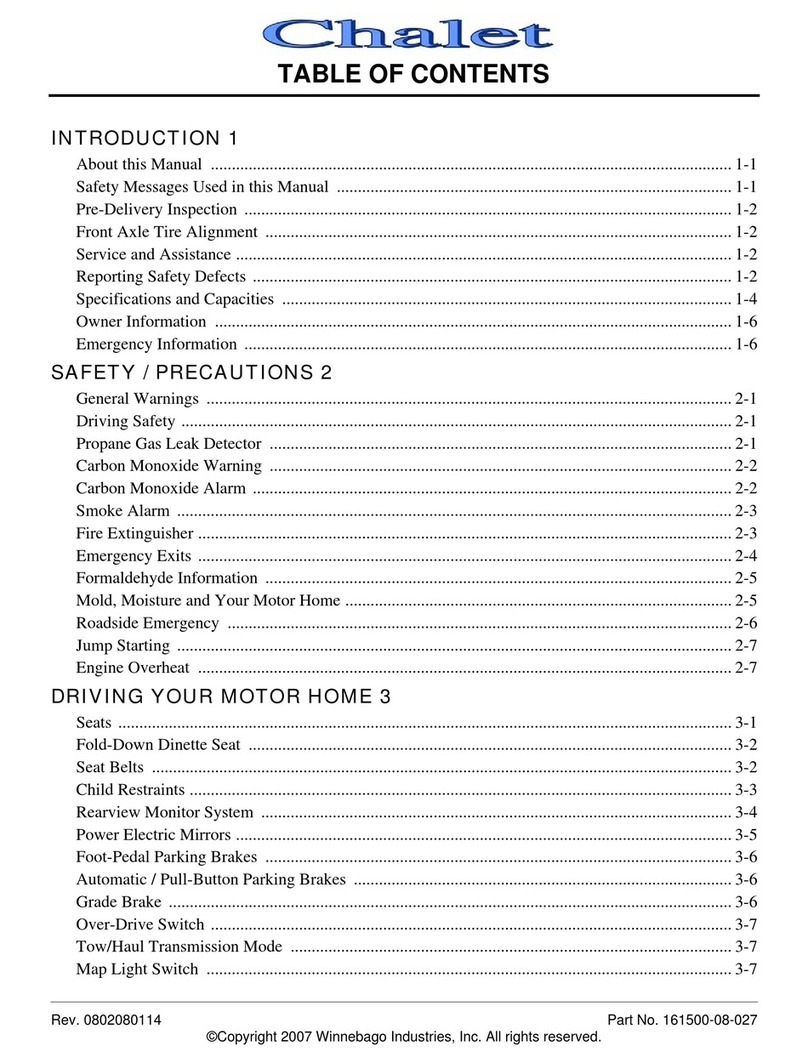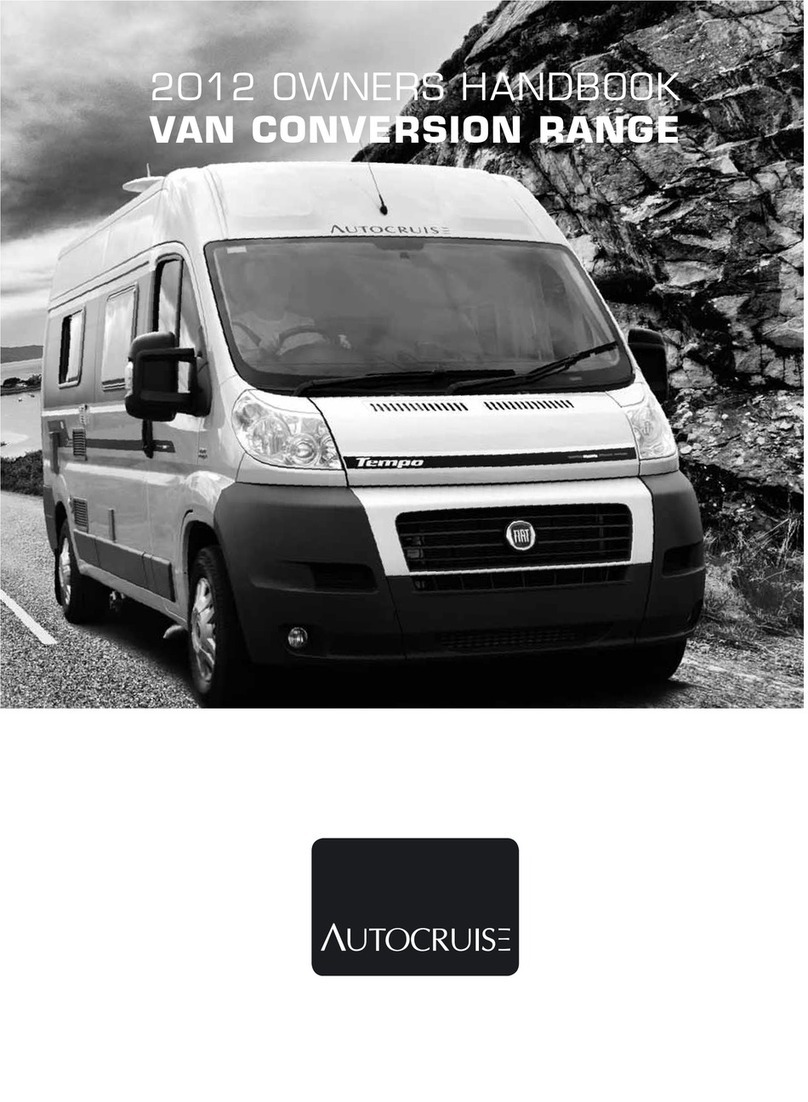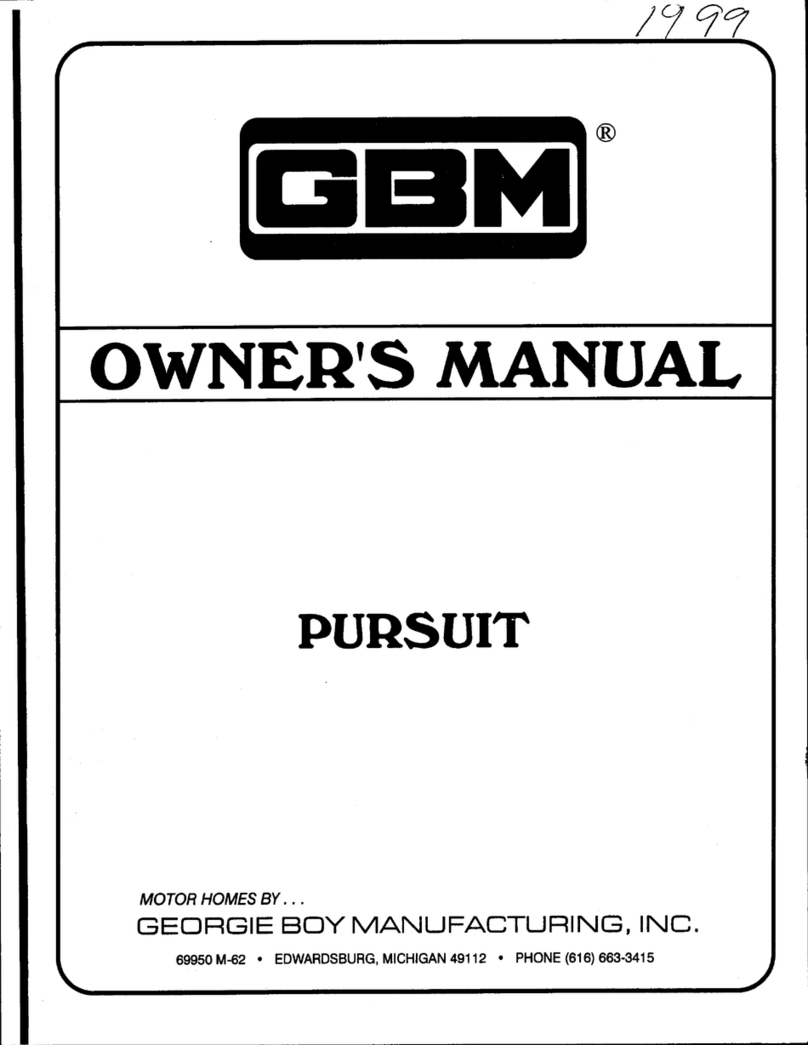ETRUSCO V 5.9 DF User manual

1
USER GUIDE
Warranty certificate
Vehicle data
Model:
Car manufacturer/type of engine:
Serial number:
Delivery date:
Initial registration:
Purchased from company:
Expiry of the warranty period:
Key number:
Chassis number:
Customer address
Surname, Christian name:
Street, house number:
Postal code, town:
Dealer’s stamp and signature

USER GUIDE
2
EXTERNAL DIMENSIONS
Model Length
(cm) Width (cm) Height (cm)
V 5.9 DF 599 214 272
V 5.9 DR 599 214 271
V 6.6 SF 671 214 272
V 6.8 SR 682 214 271
T 6.9 SF 698 232 287
T 7.3 SF 734 232 287
T 7.3 SCF 734 232 287
T 7.3 QCF 734 232 287
T 5900 FB 595 232 295
T 6900 DB 695 232 295
T 6900 SB 695 232 295
T 7300 SB 730 232 295
T 7400 SB 740 232 295
T 7400 SBC 740 232 295
T 7400 QBC 740 232 295
A 6600 BB 659 232 310
A 7300 DB 725 232 310
I 6900 SB 695 232 295
I 7400 SB 740 232 295
I 7400 SBC 740 232 295
I 7400 QBC 740 232 295
The dimensions refer to the standard vehicle
(with standard equipment), without any optional
equipment and/or accessories mounted.
WARNING
Please observe the chassis manufacturer’s
operating instructions at all times.
WARNING
We recommend to download the updated version
of the Fiat manual at the following
address:
https://aftersales.fiat.com/elum
WARNING
We recommend to download the updated version
of the Citroën manual at the following
address:
https://service.citroen.com/ACddb/
WARNING
We recommend to download the updated version
of the Ford manual at the following address:
https://www.ford.co.uk/support/owner-manuals
WARNING
We recommend to download the updated version
of the Renault manual at the following address:
https://www.e-guide.renault.com/portail
WARNING

3
USER GUIDE
This manual refers to devices and/or features that
may be optional (not standard) or not foreseen for
certain models.
NOTE
Never use a backward-facing child restraint
system on a seat protected by an active frontal
airbag. Risk of death or serious injury to the child.
WARNING
The terms used in this manual with regard to
weight specifications are explained again in detail
at the end of the manual, in the chapter “Legal
notes on weight-related information”.
WARNING

USER GUIDE
4

5
USER GUIDE
TABLE OF CONTENTS
1 - Safety............................................... 7
1.1 General rules............................................................ 7
1.2 Fire prevention ........................................................8
1.3 In case of fire...........................................................8
1.4 Regulations for supplying electricity............8
1.4.1 During connection.................................................8
1.4.2 During disconnection...........................................8
1.4.3 Additional inspections .........................................8
1.5 Technically permissible maximum laden
mass.............................................................................9
1.6 Actual weighed mass and remaining
load capacity............................................................9
1.7 Technically permissible maximum laden
mass on the axle (mass on the axle).........10
1.8 Increase of load capacity and reduction
of load capacity..................................................... 11
1.9 Load distribution and load securing........... 12
1.10 Rear garages and rear storage
compartments (depending on
the model) ............................................................... 13
1.11 Refuelling ................................................................. 14
1.12 Removable inside ladder...................................15
1.13 Inside steps..............................................................15
1.14 Furniture doors ......................................................15
1.15 Cab blinds................................................................ 16
1.16 Cab carpeting........................................................ 16
1.17 Front passenger side airbag and child
restraint systems.................................................. 16
2 - General advice.............................17
2.1 Warning......................................................................17
2.2 Departure..................................................................17
2.3 Driving ........................................................................17
2.4 Stops.......................................................................... 18
3 - Seatbelts ...................................... 19
3.1 Use and maintenance........................................ 19
3.1.1 How to use the seatbelts................................. 19
3.1.2 Maintenance and cleaning of the belts.... 20
3.2 Vehicles equipped with Isofix
attachment for transporting children
(optional) ................................................................. 20
3.2.1 A series.................................................................... 20
3.2.2 T 7400 SBC, T 7400 QBC, I7400 SBC,
I 7400 QBC............................................................. 21
3.2.3 V 5.9 DF, V 6.6 SF................................................ 21
3.2.4 T 6.9 SF, T 7.3 SF ................................................22
3.2.5 T 7.3 SCF, T 7.3 QCF .........................................22
3.2.6 V 5.9 DR, V 6.8 SR ............................................. 23
4 - Doors..............................................25
4.1 Key equipment (models on Fiat/Citroën
chassis).....................................................................25
4.1.1 Remote control integrated in the
ignition key ..............................................................25
4.1.2 V, T and A series: manual use of key.........25
4.2 Key equipment (models on Ford
chassis).................................................................... 26
4.2.1 Remote control integrated in the
ignition key ............................................................. 26
4.3 Key equipment (models on
Renault chassis)...................................................27
4.3.1 Remote control integrated in the
ignition key ..............................................................27
4.4 Living quarters door .......................................... 28
5 - Windows and roof lights .........29
5.1 Windows.................................................................. 29
5.1.1 Dometic windows ............................................... 29
5.1.2 Polyplastic windows .......................................... 29
5.2 Cab windows.........................................................30
5.2.1 I series......................................................................30
5.3 Roof lights ............................................................... 31
5.3.1 Dometic Micro/Mini/Midi Heki....................... 31
5.3.2 MPK 40 X 40 ........................................................ 32
5.3.3 MPK 28 X 28......................................................... 32
5.3.4 Polyplastic StarView.......................................... 32
5.3.5 Vehicles with electric drop-down bed
over the dinette (optional).............................. 33
6 - Entrance step..............................35
6.1 Use and maintenance........................................35
6.2 In case of malfunction.......................................35
7 - Electric system...........................37
7.1 Introduction.............................................................37
7.2 12 V distribution control unit- Fuses..........37
7.3 Control panel ........................................................ 38
7.4 Batteries.................................................................. 38
7.4.1 Engine battery...................................................... 38
7.4.2 Auxiliary battery................................................... 38
7.5 Power supply - Battery charger................... 39
7.6 Other components.............................................40
7.7 Booster ......................................................................41
8 - Refrigerator ................................ 43
8.1 Absorption refrigerators.................................. 43
8.1.1 Warning.................................................................... 43
8.1.2 LED control panel............................................... 43
8.1.3 LCD touchscreen................................................ 44
8.1.4 Manual selection of the type of power
supply ....................................................................... 44
8.1.5 Automatic mode .................................................. 44
8.2 Compressor refrigerators............................... 45
8.2.1 Warning.................................................................... 45
8.2.2 Control panel ........................................................ 45

USER GUIDE
6
TABLE OF CONTENTS
9 - Gas system ..................................47
9.1 General description ............................................47
9.2 Gas pressure regulator with crash
sensor (optional) ..................................................47
9.3 Gas bottle replacement ................................... 48
9.4 Hob and oven........................................................ 49
10 - Heating system............................51
10.1 Truma heating system........................................51
10.2 Drain valve................................................................51
10.3 Control panel ..........................................................51
10.3.1 Analogue control panel......................................51
10.3.2 CP Plus digital control panel (optional).....52
11 - Water system ..............................53
11.1 Introduction.............................................................53
11.2 Fresh water tank ..................................................53
11.3 Waste water tank................................................ 54
12 - Washroom ....................................55
12.1 Cassette-type toilet............................................55
12.2 Shower cab
(V 5.9 DF, V 5.9 DR, V6.6SF, V 6.8 SR,
T 6.9SF, T 6900SB, I 6900 SB,
T7300 SB) .............................................................57
12.3 Shower cab (T 5900 FB).................................57
13 - Internal components ................59
13.1 Table - A type ........................................................59
13.2 Table - B type ........................................................59
13.3 Table - C type.......................................................60
13.4 Tables with telescopic leg (optional).........60
13.5 Beds with electric handling (optional)......60
13.5.1 Bed above the dinette ...................................... 60
13.5.2 Rear bed................................................................... 61
13.6 Bed above the dinette with manual
handling (optional)............................................... 61
13.7 Tilting bed cab I series with manual
handling ................................................................... 62
13.8 Other components............................................. 62
13.8.1 Snap in tilting piece ........................................... 62
13.8.2 Bed safety net...................................................... 62
13.8.3 Cab seating............................................................ 63
14 - Settees ..........................................65
14.1 Lengthways settee (A type) .......................... 65
14.2 Lengthways settee (B type) .......................... 66
14.3 “L”-shaped settee ................................................67
15 - Night conversion (optional)... 69
15.1 T and I series - Table with foldable leg.... 69
15.2 T and I series - Table with telescopic
leg............................................................................... 70
15.3 A 6600 BB............................................................. 70
15.4 A 7300 DB ...............................................................71
15.5 T 7400 SBC, T 7400 QBC, I7400 SBC,
I 7400 QBC, T7.3 SCF, T 7.3 QCF ..............71
15.6 V 6.6 SF, V 6.8 SR ...............................................72
16 - Accessories.................................73
16.1 Safety ........................................................................73
17 - Maintenance................................75
17.1 Tyres ..........................................................................75
17.1.1 General warnings.................................................75
17.1.2 Tyre pressure.........................................................75
17.2 Cleaning....................................................................76
17.2.1 Interior.......................................................................76
17.2.2 Upholstery ...............................................................76
17.2.3 Exterior .....................................................................76
17.2.4 Tanks..........................................................................76
17.3 Flooring.....................................................................77
17.4 Furniture...................................................................77
17.5 Headlights ...............................................................77
17.6 Inactivity of the vehicle .....................................78
17.6.1 In case of danger of frost................................78
17.6.2 Before a long period of inactivity.................78
17.6.3 After a long period of inactivity ....................78
17.7 Fiat/Citroën chassis number ........................79
17.8 Ford chassis number ........................................79
17.9 Renault chassis number ..................................79
17.10 Customer service................................................80
17.10.1 Spare parts and accessories........................ 80
18 - Legal notes on weight-related
information................................... 81
18.1 Technically permissible maximum laden
mass........................................................................... 81
18.2 Mass in running order........................................ 81
18.3 Mass of the passengers................................... 81
18.4 Optional equipment and actual mass
of the vehicle.......................................................... 81
18.5 Pay-mass and minimum pay-mass............. 82
18.6 Effects of tolerances of the mass in
running order on the pay-mass.................... 83

7
USER GUIDE
SAFETY
1.1 General rules
• Read this handbook before using the motorhome
for the first time.
• Follow all the instructions on labels inside the
vehicle
• Using the vehicle in faulty conditions is dangerous
for passengers and things as well as for the vehicle
itself.
• Do not carry inside the vehicle material that can
cause dangerous fumes.
• The water from the tanks is not suitable for
drinking, cooking or washing food.
• The kitchen sink cover and any other free object
that could be dangerous during the journey must
be kept in closed places.
Never leave children alone inside the vehicle.
WARNING
Your vehicle is equipped with a refrigerator specif-
ically designed for caravans, motorhomes and
nautical vehicles that can operate with three
different sources of energy: 230 V, 12 V and
gas. We recommend the utmost care in storing
perishable food because the performances of this
appliance cannot be compared with those of a
household refrigerator constantly powered at 230
V and they are also affected by the climatic condi-
tions the vehicle is exposed to.
WARNING
If you have purchased a new vehicle, please
get the wheel bolts checked by a specialised
workshop after traveling 50 km.
WARNING
Qualified personnel only can carry out mainte-
nance operations of both gas and electric
systems.
WARNING
Use upper bunks for sleeping only, with protection
against falling-out. Care should be taken against
the risk of falling out when upper bunks are used
by children, especially under 6 years of age.
These bunks are not suitable for use by infants
without supervision.
WARNING
Inspect flexible gas hoses regularly for deterio-
ration and renew as necessary with the approved
type. Either the expiry date or the production date
is marked on the hoses. If the production date is
indicated, refer to the regulations in force in your
country to determine the expiry date. In any case,
the expiry date of the hoses may vary depending
on the country you are in.
WARNING

USER GUIDE
8
SAFETY
1.2 Fire prevention
• Provide one dry powder fire extinguisher complying
with EN 3-7 of at least 1 kg capacity, or one equiv-
alent fire extinguisher, by the main exit door, and a
fire blanket next to the cooker. Familiarise yourself
with the instructions on your fire extinguisher and
the local fire precaution arrangements.
1.3 In case of fire
• Evacuate the passengers and call the firemen.
• Close the gas bottle valve and try to extinguish
the flames (only in case these operations are not
dangerous).
1.4 Regulations for supplying
electricity
1.4.1 During connection
1) Before connecting the motorhome system to the
electricity supply, check that:
• the power supply system provided at the campsite
has suitable voltage for the motorhome’s electric
system and electric appliances;
• the cable and connections are all compatible;
• the motorhome’s circuit breaker (see electric
system chapter in this manual) is turned to the
“OFF” position.
2) Check that the cable, connectors and connections
are all intact and not damaged in any way.
3) Take the cover off the external 230 V socket and
insert the plug.
4) Connect the cable to the socket of the campsite
power point.
5) Turn the motorhome’s circuit breaker to the “ON”
position.
6) Check that the motorhome’s circuit breaker
operates correctly by pressing the test button, and
then reactivating it again.
1.4.2 During disconnection
Turn motorhome’s circuit breaker on the “OFF”
position and first disconnect the power supply cable
from the camping site mains, and then from the
motorhome’s system.
1.4.3 Additional inspections
It is recommended to have the motorhome’s power
supply system inspected at least once every three
years - and once a year in case of intensive use of the
vehicle - by a qualified electrician who can provide a
printed report of the system’s actual conditions.
Inside the vehicle never use any kind of braziers,
portable equipments for heating or cooking, as
there is a risk of fire and death by asphyxiation.
WARNING
The power supply cable must be fully unwound to
prevent any damage from overheating.
WARNING
In case of doubt or if the power supply fails
to work or malfunctions after being connected,
contact the manager of the campsite.
WARNING
It is forbidden to transport easily inflammable
materials (petrol, diesel oil, kerosene oil, propane
gas, butane gas, natural gas, ect.) inside the
vehicle. Keep combustible materials (wood, fabric,
cotton, wool, board, ect.) far from heating system
and burners. Gas bottles must be transported
exclusively inside the special locker. During the
journey or during stops at filling stations it is
forbidden to keep the main valve of the gas bottle
open.
WARNING
If you transport mopeds or similar, which are
powered by flammable fuels, make sure that their
tank is completely empty.
WARNING

9
USER GUIDE
SAFETY
1.5 Technically permissible
maximum laden mass
The technically permissible maximum laden mass is
a value specified by the manufacturer that, for safety
reasons, the vehicle must never exceed, even when
loaded (e.g. 3,500 kg). Information on the technically
permissible maximum laden mass can be found in the
registration papers and on the body manufacturer’s
nameplate in the vehicle, behind the right cab seat.
a) Manufacturer name.
b) Type-approval number.
c) Chassis number.
d) Technically permissible maximum laden mass.
e) Technically permissible maximum laden mass of
vehicle plus trailer combination.
f) Technically permissible maximum laden mass on
the front axle.
g) Technically permissible maximum laden mass on
the rear axle.
h) Etrusco chassis number.
1.6 Actual weighed mass and
remaining load capacity
To determine the remaining load capacity, it is
important that you know the actual weighed mass of
your vehicle.
Upon completion of your vehicle, therefore, we
determine the actual weight of your vehicle for the
first time by weighing it at the end of the line. This
includes the mass in running order plus the weight of
all ordered and factory-fitted optional equipment.
You can use this actual weighed mass to calculate the
remaining load capacity for baggage or other acces-
sories. Example:
It is the driver’s responsibility to comply with
the technically permissible maximum laden mass,
the technically permissible maximum laden mass
of the vehicle plus trailer combination and the
technically permissible maximum laden mass on
each axle.
WARNING
Overloading the vehicle and the axles may result,
for example, in a diminished steering response
(altered driving behavior), an overloading of the
tires, and, as a result, an increased risk of tire
blowouts or an extended braking distance. This
may cause you to lose control of the vehicle,
endangering yourself and other road users. If you
are not sure whether the loaded vehicle complies
with the technically permissible maximum laden
mass, you can weigh/check the vehicle on public
scales or have it weighed by certain dealers.
WARNING
Installing accessories reduces the load capacity.
WARNING
If you drive the vehicle even though it exceeds
the technically permissible maximum laden mass
specified by the manufacturer, you may face legal
consequences, such as a fine or loss of insurance.
NOTE
Please note that the factory calculation of the
remaining load capacity for the mass of the driver
(included in the actual weighed mass) and the
mass of the passengers is based on a gener-
alized mass of 75 kg per seat. Due to deviating
body weights, however, the actual remaining load
capacity of your vehicle may vary.
NOTE
Technically
permissible
maximum
laden mass
Actual
weighed
mass
Mass of
passengers
Remaining
load
capacity
3500 kg - 3000 kg - 225 kg
(3 * 75 kg) = 275 kg
Example of body manufacturer’s nameplate
a
b
c
d
e
f
g
h

USER GUIDE
10
SAFETY
1.7 Technically permissible
maximum laden mass on the
axle (mass on the axle)
The technically permissible maximum laden mass on
the axle or group of axles (hereafter referred to as
mass on the axle) refers to the vehicle- and axle-spe-
cific load that may be transferred from the wheels
of an axle or group of axles to the road surface. The
mass on the axle is a value specified by the manufac-
turer that, for safety reasons, the vehicle must never
exceed, even when loaded.
You will find information on the mass on the axle of
your vehicle in the registration papers and on the
body manufacturer’s nameplate in the vehicle, behind
the right cab seat.
a) Manufacturer name.
b) Type-approval number.
c) Chassis number.
d) Technically permissible maximum laden mass.
e) Technically permissible maximum laden mass of
vehicle plus trailer combination.
f) Technically permissible maximum laden mass on
the front axle.
g) Technically permissible maximum laden mass on
the rear axle.
h) Etrusco chassis number.
The actual factory-weighed mass of your vehicle
may vary slightly afterwards due to weather condi-
tions and, for example, the associated absorption
or release of moisture. Any further subsequent
modification of your vehicle, e.g. through the
additional installation of accessories by the dealer
or other attachments and/or conversions, will
additionally influence the actual weighed mass
of the vehicle communicated and consequently
also the remaining load capacity. It is the respon-
sibility of the dealer after picking up the vehicle at
the factory until delivery, and subsequently your
responsibility from the time of handover by the
dealer, to ensure that the technically permissible
maximum laden mass is not exceeded. If you are
not sure whether the loaded vehicle complies with
the technically permissible maximum laden mass,
you can weigh/check the vehicle on public scales
or have it weighed by certain dealers.
NOTE
We will inform your dealer of the actual weighed
mass of your vehicle and the remaining load
capacity when we issue the invoice. Your dealer
is required to pass on the information to you. If
you have not received this information, you can
contact your dealer and request it. Our scales
meet all legal and standard requirements and
are regularly maintained, tested and, calibrated.
Nevertheless, a slight tolerance is technically
unavoidable. Moreover, the weight of the vehicle
may vary slightly due to weather conditions and,
for example, the associated absorption or release
of moisture. The actual weight of the vehicle may
therefore deviate from the actual weight commu-
nicated by a few kilograms.
NOTE
Example of body manufacturer’s nameplate
a
b
c
d
e
f
g
h

11
USER GUIDE
1.8 Increase of load capacity
and reduction of load
capacity
In the case of an increase of load capacity, a change
in the chassis usually increases the technically
permissible maximum laden mass of the vehicle, the
technically permissible maximum laden mass on the
axle and, as a result, the remaining load capacity for
luggage, camping equipment, etc.
In contrast to an increase of load capacity, a reduction
of load capacity reduces the technically permissible
maximum laden mass of the vehicle, the technically
permissible maximum laden mass on the axle and,
as a result, the remaining load capacity for luggage,
camping equipment, etc. As a rule, a technical modifi-
cation of the chassis is not performed.
SAFETY
Please note that the mass on the respective axles
or axle groups may differ. For this reason, please
read the information provided in the registration
papers carefully.
NOTE
If the technically permissible maximum laden
mass on the axle is exceeded, the vehicle may
be damaged (e.g. due to a broken axle or tire
blowout) and driving performance may be consid-
erably impaired. This may cause you to lose
control of the vehicle, endangering yourself and
other road users. We therefore recommend
weighing the final loaded vehicle including all
passengers before commencing travel in order
to ensure compliance with the mass on the axle
and the technically permissible maximum laden
mass at all times. For this purpose, you can weigh/
check the vehicle on public scales or have it
weighed by certain dealers.
WARNING
If you drive the vehicle even though it exceeds the
technically permissible maximum laden mass on
the axle specified by the manufacturer, you may
face legal consequences, such as a fine or loss of
insurance.
NOTE
Due to the change in the technically permissible
maximum laden mass, increases or reductions
of load capacity may affect the permitted seats,
the chassis, and the mass on the axle. If you have
any questions, feel free to contact the responsible
technical testing center for advice.
NOTE
It is possible that the chassis manufacturer of
your vehicle specifies a minimum load for the front
axle in order to achieve optimum driving behavior.
Therefore, please also always observe the infor-
mation regarding this from the operating instruc-
tions of the chassis manufacturer.
NOTE
A reduction or increase of load capacity may
result in changes to the legal requirements
resulting from the new technically permissible
maximum laden mass of the vehicle. This applies
in particular to the legal requirements from the
German Road Traffic Act (StVO), the German
Road Vehicle Registration Regulation (StVZO),
and tax and insurance regulations. An increase
of technically permissible maximum laden mass
to over 3,500 kg may, for example, affect the
driving license class or result in different speed
limits or prohibitions on passing and overtaking.
Toll payment requirements may also change due
to the new technically permissible maximum laden
mass. Therefore, inform yourself about the current
legal situation with regard to the new technically
permissible maximum laden mass of the vehicle
and seek advice on this from the appropriate
bodies. Please note that national regulations in
the country of your destination and countries
visited in transit may differ from those in your
home country.
NOTE
For further information on correct loading, please
refer to the paragraphs 1.9 “Load distribution and
load securing” and 1.10 “Rear storage spaces and
rear garages”.
NOTE
For more information on the actual weighed mass
of your vehicle and the remaining load capacity,
please refer to the paragraph 1.6 “Actual weighed
mass and remaining load capacity”.
NOTE

USER GUIDE
12
SAFETY
1.9 Load distribution and load
securing
When loading the vehicle, please observe the
following instructions to ensure safe driving:
• Baggage and other items carried in the vehicle
must be evenly distributed between the left and
right sides of the vehicle.
• Heavy or bulky items should be stowed as close to
the ground as possible in stowage boxes provided
for this purpose and near the axles, and they must
be secured against slipping.
• Light and other items can be stowed in lockers and
storage compartments.
• Always ensure that the doors and flaps on the
cabinets and storage compartments are properly
secured.
• Use only suitable clamping systems to secure
items against slipping. Please recheck all tie-downs
before commencing travel.
For vehicles on Ford chassis: in case of an
awning installation, limit the load of each individual
wall-fitted cupboard (upper cabinet) to a max. of
5 kg.
WARNING
Uneven loading has a negative effect on driving
behavior. A rear-heavy load in particular results
in a reduction of the load on the front axle due
to leverage effects and thus, for example, to a
loss of traction, a diminished steering response
(altered driving behavior), an overloading of the
tires and, as a result, an increased risk of tire
blowouts. This may cause you to lose control of
the vehicle, endangering yourself and other road
users. An evenly distributed load over the entire
vehicle leads to optimum driving behavior during
travel.
WARNING
The technically permissible maximum laden
mass and the technically permissible maximum
laden mass on the axle must not be exceeded.
Especially when stowing or attaching heavy
accessories or heavily laden accessories (such
as motorcycle carriers or bicycle carriers) at
the rear, the mass on the axle must be checked
and complied with. If you are not sure whether
the loaded vehicle complies with the technically
permissible maximum laden mass and the techni-
cally permissible maximum laden mass on the
axle, you can weigh/check the vehicle on public
scales or have it weighed by certain dealers.
NOTE
The technically permissible maximum laden
mass and the technically permissible maximum
laden mass on the axle must not be exceeded.
Especially when stowing or attaching heavy
accessories or heavily laden accessories (such
as motorcycle carriers or bicycle carriers) at
the rear, the mass on the axle must be checked
and complied with. If you are not sure whether
the loaded vehicle complies with the technically
permissible maximum laden mass and the techni-
cally permissible maximum laden mass on the
axle, you can weigh/check the vehicle on public
scales or have it weighed by certain dealers.
NOTE
Further information on correct loading can be
found in the paragraphs 1.5 “Technically permis-
sible maximum laden mass”, 1.7 “Technically
permissible maximum laden mass on the axle
(mass on the axle)” and 1.10 “Rear garages and
rear storage compartments”.
NOTE

13
USER GUIDE
SAFETY
1.10 Rear garages and rear
storage compartments
(depending on the model)
When loading rear garages and rear storage compart-
ments, please observe the following instructions to
ensure safe driving:
• Baggage and items carried in rear garages and
rear storage compartments must also be evenly
distributed in accordance with the paragraph 1.9
“Load distribution and load securing”.
• All items stowed in rear garages and rear stowage
compartments must be fastened and secured
accordingly using suitable clamping systems at the
existing fastening points provided at the factory.
• Before driving off, it must be ensured that the rear
garage or rear storage compartment is properly
locked.
Uneven loading or overloading has a negative
effect on driving behavior. A rear-heavy load
in particular results in a reduction of the load
on the front axle due to leverage effects and
thus, for example, to a loss of traction, a dimin-
ished steering response (altered driving behavior),
an overloading of the tires and, as a result,
an increased risk of tire blowouts. This may
cause you to lose control of the vehicle, endan-
gering yourself and other road users. An evenly
distributed load over the entire vehicle leads to
optimum driving behavior during travel. If you are
not sure whether the loaded vehicle complies with
the technically permissible maximum laden mass
and the technically permissible maximum laden
mass on the axle you can weigh/check the vehicle
on public scales or have it weighed by certain
dealers.
WARNING
When transporting vehicles powered by gasoline,
diesel, gas, or other flammable material, make
sure that the tank of the transported vehicle
is completely empty. When transporting electric
bikes, we also recommend that you remove and
securely stow the battery before commencing
travel.
WARNING
Rear garages and rear storage compartments
are not designed at the factory to function as
sleeping or living areas for people or animals.
These spaces are not provided with ventilation at
the factory. There is a risk of suffocation due to a
lack of oxygen.
WARNING
Please observe the maximum permissible load of
the rear garage or rear storage compartment at all
times. The specified maximum permissible load of
the rear garage or rear storage compartment may
be influenced by the selection of further optional
equipment, such as trailer couplings or frame
extensions. However, the technically permissible
maximum laden mass and the technically permis-
sible maximum laden mass on the axle must not
be exceeded under any circumstances. Especially
when stowing or attaching heavy accessories or
heavily laden accessories (such as motorcycle
carriers or bicycle carriers) at the rear, the mass
on the axle must be checked and complied with.
For this reason, please note that the maximum
load may not be fully utilized if this would result
in the exceedance of the technically permissible
maximum laden mass or technically permissible
maximum laden mass on the axle.
NOTE
Further information on correct loading can be
found in the paragraphs 1.5 “Technically permis-
sible maximum laden mass”, 1.7 “Technically
permissible maximum laden mass on the axle
(mass on the axle)” and 1.9 “Load distribution and
load securing”.
NOTE
Distribute the load evenly. Loads concentrated too
much in one place can damage the floor covering.
WARNING

USER GUIDE
14
SAFETY
1.11 Refuelling
The refuelling cap is located on the exterior left wall
of the vehicle near the driving cab and is marked with
“DIESEL”.
Other caps for water tank refilling may also be
present on the exterior vehicle wall. Use the
utmost care to avoid confusing the two types of
caps.
WARNING
Close the main valve of the gas bottle before
refuelling.
WARNING
During the journey or during stops at filling
stations it is forbidden to keep the main valve of
the gas bottle open.
WARNING
Fiat/Citroën chassis
Ford chassis
Renault chassis

15
USER GUIDE
SAFETY
Additive for diesel emissions AdBlue®
The vehicle is equipped with a system to reduce
harmful emissions. This system requires a regular
supply of an additive (AdBlue®).
The cap, in light blue color, for the supply of the
additive is located in different places according to the
various models:
• Models on Fiat/Citroën chassis: outer door on the
left side, together with the diesel filler.
• Models on Ford chassis: outer door on the left side,
under the diesel filler.
• Models on Renault chassis: outer door on the right
side.
1.12 Removable inside ladder
Some models can be equipped with a removable
ladder that gives access to the raised beds.
1.13 Inside steps
Some vehicles are equipped with steps that connect
different areas of the living area or facilitate access to
the raised beds.
1.14 Furniture doors
Some furniture doors, either high or low, may remain
open in positions in which they may strike vehicle
users, e.g. high doors may interfere with the head and
low doors may interfere with the legs. Use extreme
caution to avoid injury.
Other caps for water tank refilling may also be
present on the exterior vehicle wall. Use the
utmost care to avoid confusing the two types of
caps.
WARNING
For warnings relating to the operation of the
emissions reduction system and the refuelling
methods for the AdBlue® additive, refer to the
chassis manual.
WARNING
Make sure the ladder is not damaged before using
it to climb into or out of bed. The ladder must be
securely fastened to the corresponding hooks on
the bed and should rest on the floor in a stable
manner.
WARNING
There is a risk of falling when using the ladder: be
careful when climbing into or out of bed.
WARNING
The ladder has been designed for climbing into
and out of bed inside the vehicle. Do not use the
ladder for other purposes.
WARNING
Memorise the position of inside steps so as not
to accidentally walk into or trip on them: doing so
can cause a risk of falling and injury.
WARNING
Fiat/Citroën chassis
Ford chassis
Renault chassis

USER GUIDE
16
SAFETY
1.15 Cab blinds
If the vehicle is fitted with cab blinds for the
windscreen and side windows, before driving whilst
the vehicle is stationary please check that all blinds
are fully open and are locked by the relevant catches.
Pay particular attention to the windscreen blind. It is in
two halves and must be securely fastened to the side
catches. After locking the blinds with the catches,
try to unlock them by pulling them quite strongly but
without releasing the catches: the blinds must remain
locked.
1.16 Cab carpeting
Ensure that any carpet located in the cabin is always
laid flat and does not interfere with the driver’s pedals.
1.17 Front passenger side airbag
and child restraint systems
Never use a backward-facing child restraint
system on a seat protected by an active frontal
airbag. Risk of death or serious injury to the child.
WARNING
If these procedures are not followed, there is a
risk that the blinds will close inadvertently while
driving, causing accidents, which can have very
serious consequences.
WARNING
If you are not sure of the integrity of the blind
locking mechanisms, do not drive the vehicle and
contact an Etrusco authorised workshop.
WARNING
Before each departure ensure that any carpet
does not interfere with the driver’s pedals.
WARNING

17
USER GUIDE
GENERAL ADVICE
For satisfactory and continuous maintenance, you
are recommended to follow the directions given
herein and those contained in the Instructions for
Use and Maintenance concerning the different appli-
ances with which the recreational vehicle is fitted.
Etrusco vehicles are fitted on chassis made by
various manufacturers. The accessories and compo-
nents used are produced by a number of selected
suppliers. The chassis manufacturers and producers
of accessories and components run their service
networks independently. Therefore, in case of need, it
is recommended to directly contact the Service Dept.
of the manufacturer of the faulty component. Having
the recommended checks and services carried out,
vehicle conditions will be optimised for many years.
2.1 Warning
In order to prevent any abnormal wear of tyres, we
recommend that you check the toe-in values of your
vehicle after driving the first 500 km. This should be
done by a specialised workshop and at your charge.
Should this check not be performed, Etrusco shall not
be held responsible for any inconvenience or damage
resulting therefrom.
2.2 Departure
Before starting-off you are recommended to:
• remove any parking rests and smooth the ground
around the vehicle, if the original conditions prior to
your stay have been altered;
• make sure you have not forgotten anything under
the vehicle or in the immediate vicinity;
• turn off the 230 V connection;
• close the gas bottle valve;
• firmly position all items inside the vehicle;
• make sure that all internal doors and cabinet doors
are closed;
• make sure that all the windows are closed;
• close the roof-lights;
• take a look at the control panel in order to check
the level of the fresh water tank and of the different
waste water tanks, as well as the condition of the
battery;
• make sure that cab and entrance doors are closed;
• correctly direct the side mirrors;
• if possible, remove or move away the table in front
of the rear seats;
• make sure that all passengers are seated as
required for driving;
• fasten your seat belts.
2.3 Driving
No matter how easy it is to drive a recreational
vehicle, it is necessary to remember that you are at
the wheel of a vehicle that is much more cumbersome
than a car. The bigger size also involves more care at
both the right hand side (do not drive too near to the
guard rail) and the left hand side (do not stay in the
middle of the road). It is advisable to practice a little to
familiarise yourself with the new size. In particular, we
suggest paying attention to the following:
• in case of wind, especially when overtaking, on
viaducts or coming out of tunnels;
• before going under passages restricted in height,
remember that accessories/optional equipment
or baggage may be installed on the roof which
increase the total height of the vehicle. Therefore,
take care in: car parks which limit vehicle access
in height, tunnels, garages and workshops, fuel
station structures, tree branches, etc.;
• when reversing, take a careful look at the rear area
and, if necessary, ask for the guidance of another
person;
• going down very steep hills.
In general, and under all circumstances, especially
when overtaking, remember that the performance
levels of a recreational vehicle are unlikely to match
those of your car. It is therefore necessary to strictly
adhere to traffic regulations, particularly the safety
distance.
It is required before departure to empty the fresh
water tank down to 20 litres. This can be done by
using the dedicated discharge tap.
WARNING
Before departure it is mandatory to completely
empty the hot water boiler.
WARNING

USER GUIDE
18
GENERAL ADVICE
2.4 Stops
During stops we advise you to:
• closely adhere to the various recommendations for
use of the systems of the living quarters provided
for in this handbook and in the instructions of
the different appliances (refrigerator, boiler, oven,
etc.), making sure these documents are on-board.
Should any documentation be missing when the
vehicle is handed over, it will be possible to ask
Etrusco’s sales organisation for it;
• make sure that the vehicle is perfectly horizontal to
ensure optimum performance of the various parts
and systems;
• always find out about any local law concerning
parking and camping.
Never obstruct the air inlets of the vehicle, both
on roof and on floor level.
WARNING
In case of long stops, the blinds of the bathroom
window and of the bathroom roof-light must be
kept closed.
WARNING

19
USER GUIDE
The seats in the living
area used by passengers
while the vehicle is in
motion are marked by the
symbol displayed here on
the side.
3.1 Use and maintenance
3.1.1 How to use the seatbelts
To fasten the seatbelt
• Grasp the metallic tab (a) of the seatbelt placed to
your right, pass it around your abdomen and insert
it in the buckle (b), placed to your left, until it is
securely fastened inside.
• The seatbelt, once fastened, must be taut, placed
tightly over the body, but it should not hinder the
occupant’s movements.
• You must be in an upright position and lean against
the back of the seat while putting your seatbelt on.
To unfasten the seatbelt
• Press the red button (c) on the buckle, and
accompany the seatbelt while it winds back into
its holder (if it comes with a reeling system), so as
to prevent it from twisting.
SEATBELTS
Picture 1 - 3 point seatbelt Picture 2 - Lap seatbelt
• Always put your seatbelt on before you get on
the road.
• Follow the examples shown in pictures 1 and 2
in order to correctly put your seatbelt on.
• The seatbelts must be used on only one
passenger at a time.
• Once you have arrived to your destination
unfasten the seatbelt and slowly accompany it
until it is completely wound up in its holder. Pay
careful attention that it does not twist.
THINGS TO DO
• Do not press the button (c) while the vehicle is
in motion.
• The seatbelt must not be twisted in any way or
part.
• Do not use devices that may hinder contact
between the seatbelt and the passenger, or
that may prevent the seatbelt from winding
back into place.
• Do not hold children on your knees by using
only one seatbelt to protect yourself and them.
THINGS TO AVOID
a
b
c
The driver of the motorhome bears full responsi-
bility, both for him/herself and for the passengers,
for the correct use of the seatbelts, as per the
current local laws.
WARNING
The reeling system blocks the seatbelt should
it be taken out quickly, with an excessive pulling
angle, and consequently with strong accelerations
and/or decelerations. In order to pull it out you
must let it briefly rewind in its holder and then pull
it out again.
WARNING
The seatbelts described above were made for
adult passengers with a minimum height of 150
cm.
WARNING

USER GUIDE
20
SEATBELTS
3.1.2 Maintenance and cleaning of
the belts
• Always make sure that the belts are not twisted in
any way so that they may smoothly slide in and out.
• Wash the belts with water and neutral soap, then
rinse. Let them dry at room temperature.
• Do not use any other types of detergents since
they could ruin or weaken the texture of the belts.
• Do not wet the reels.
• Replace the belts should they be ripped and/or
loose. This repair must be carried out by authorised
personnel.
3.2 Vehicles equipped with
Isofix attachment for
transporting children
(optional)
In order to travel in a motorhome each passenger
must be able to fasten him/herself to a suitable
restraint system.
Also children must be fastened to restraint systems
that are suitable for their weight / height / age, as
stated in European Regulation ECE R44, since these
systems are mandatory.
Child restraint systems are divided into 5 groups:
Group 0 ........................................... up to 10 kg
Group 0+ ......................................... up to 13 kg
Group 1 ................................................. 9 – 18 Kg
Group 2 .............................................. 15 – 25 Kg
Group 3 ............................................ 22 – 36 Kg
3.2.1 A series
The following child restraint systems may be placed
on the seats of the motorhome:
U = suitable for child restraint systems and for [ISOFIX
child restraint systems] of universal category for
the respective weight class.
• If the seatbelt was used under great stress
(such as in a serious accident), you must
replace the entire system along with all its
fastening equipment.
THINGS TO DO
• Do not attempt to disassemble or alter the
parts of the seatbelt. Each and every inter-
vention must be carried out by authorised
personnel.
THINGS TO AVOID
The use of the child restraint system and the
[ISOFIX child restraint system] is only permitted
after the table has been removed.
WARNING
Always check the correct attachment of the child
seat, try to remove it without intervening with the
locking device.
WARNING
Group
First row
Passenger
seat
Second row
Seat position
5 and 6
Third row
Seat position
3 and 4
0
See Fiat
/ Citroën
manual
Not
applicable
U [E-ISO/R1]
U [F-ISO/L1]
U [G-ISO/L2]
0+
See Fiat
/ Citroën
manual
Not
applicable
U [E-ISO/R1]
U [D-ISO/R2]
U [C-ISO/R3]
1
See Fiat
/ Citroën
manual
Not
applicable
U [D-ISO/R2]
U [C-ISO/R3]
U [B-ISO/F2]
U [B1-ISO/F2X]
U [A-ISO/F3]
2
See Fiat
/ Citroën
manual
Not
applicable
U [Not
applicable]
3
See Fiat
/ Citroën
manual
Not
applicable
U [Not
applicable]
This manual suits for next models
20
Table of contents
Popular Motorhome manuals by other brands
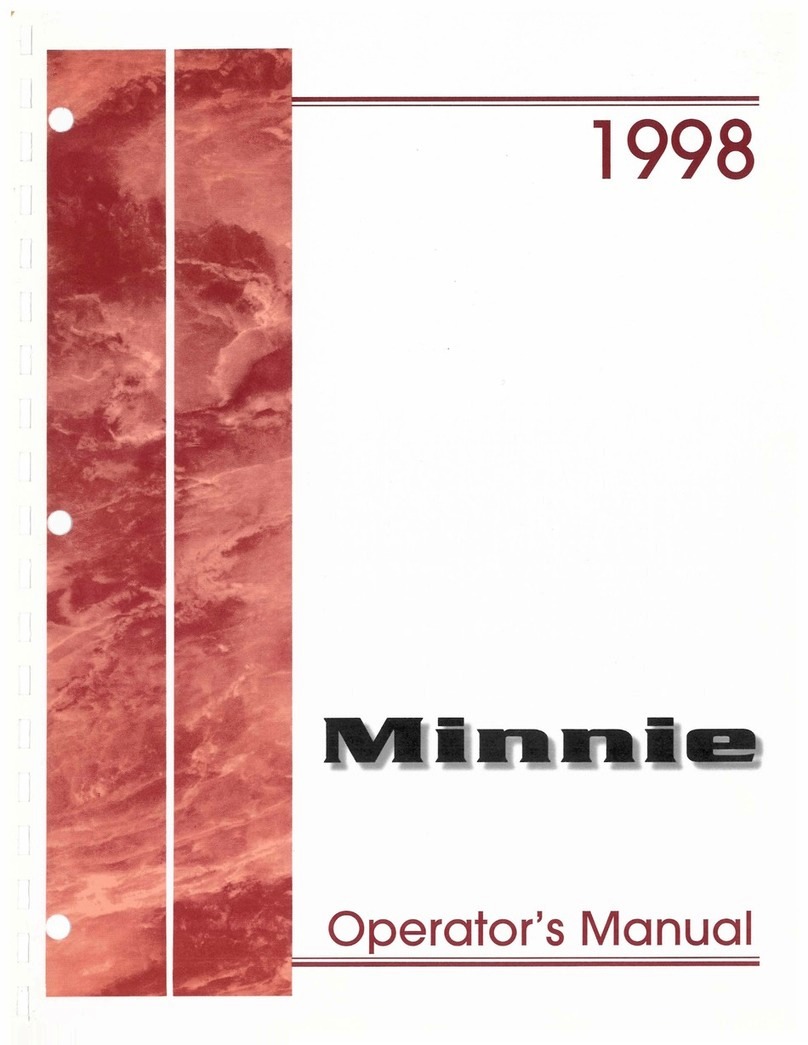
Winnebago
Winnebago 1998 Minnie Operator's manual

Cub
Cub RV BLIND SPOT installation guide
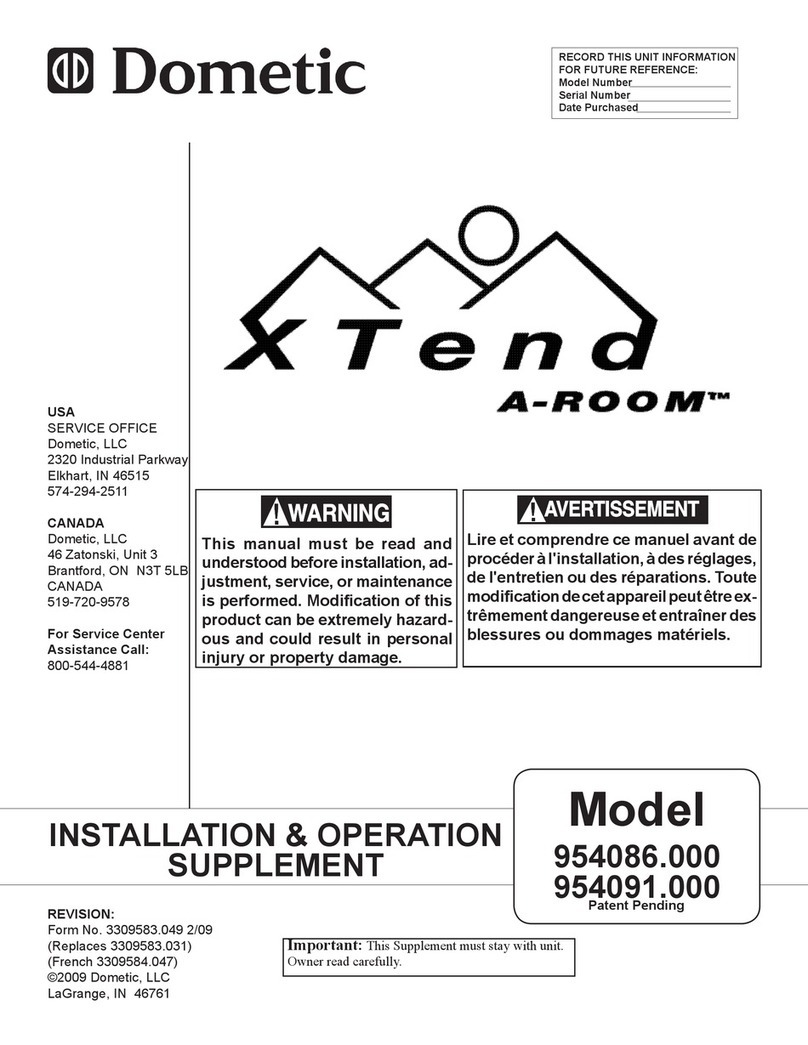
Dometic
Dometic Xtend A-Room 954086.000 Installation/operation supplement
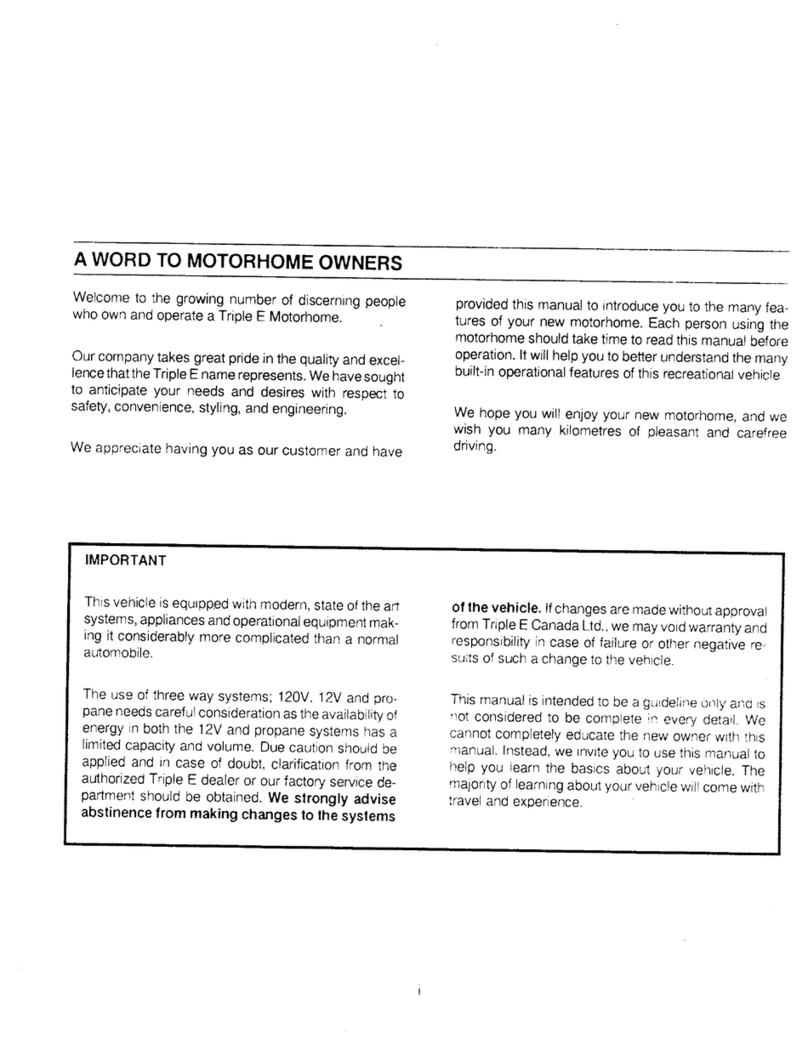
Triple E
Triple E 1994 Regency class C owner's manual
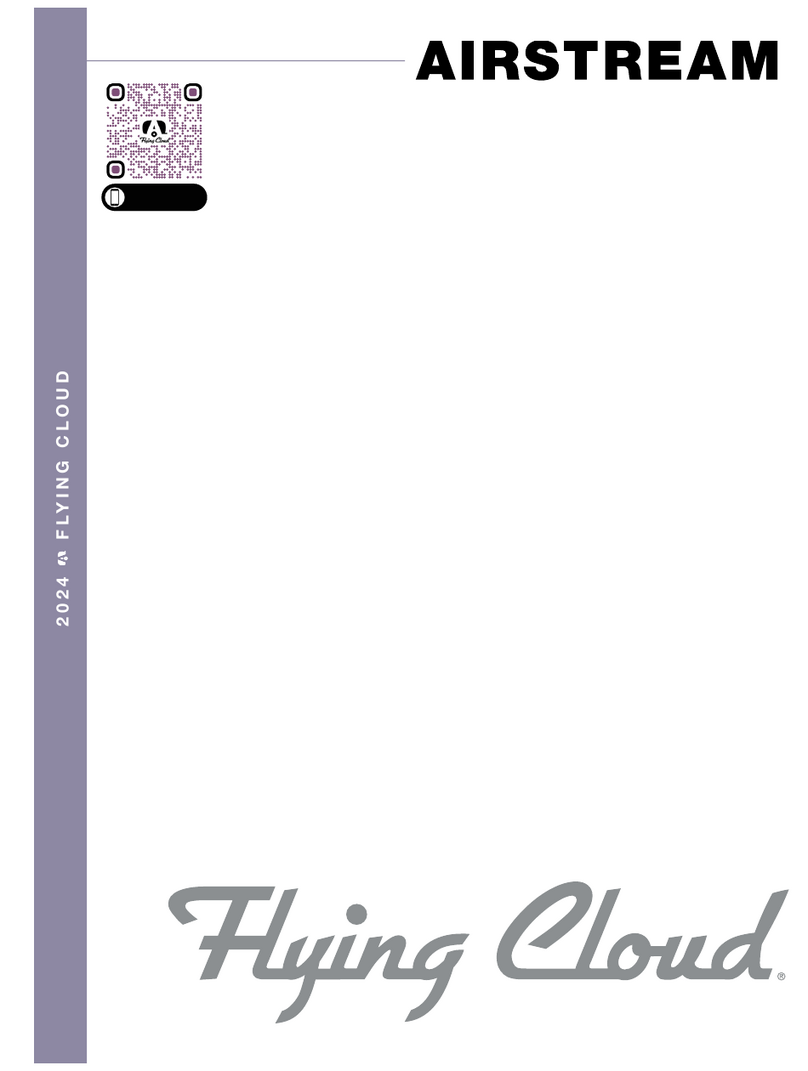
Airstream
Airstream FLYING CLOUD 2024 owner's manual
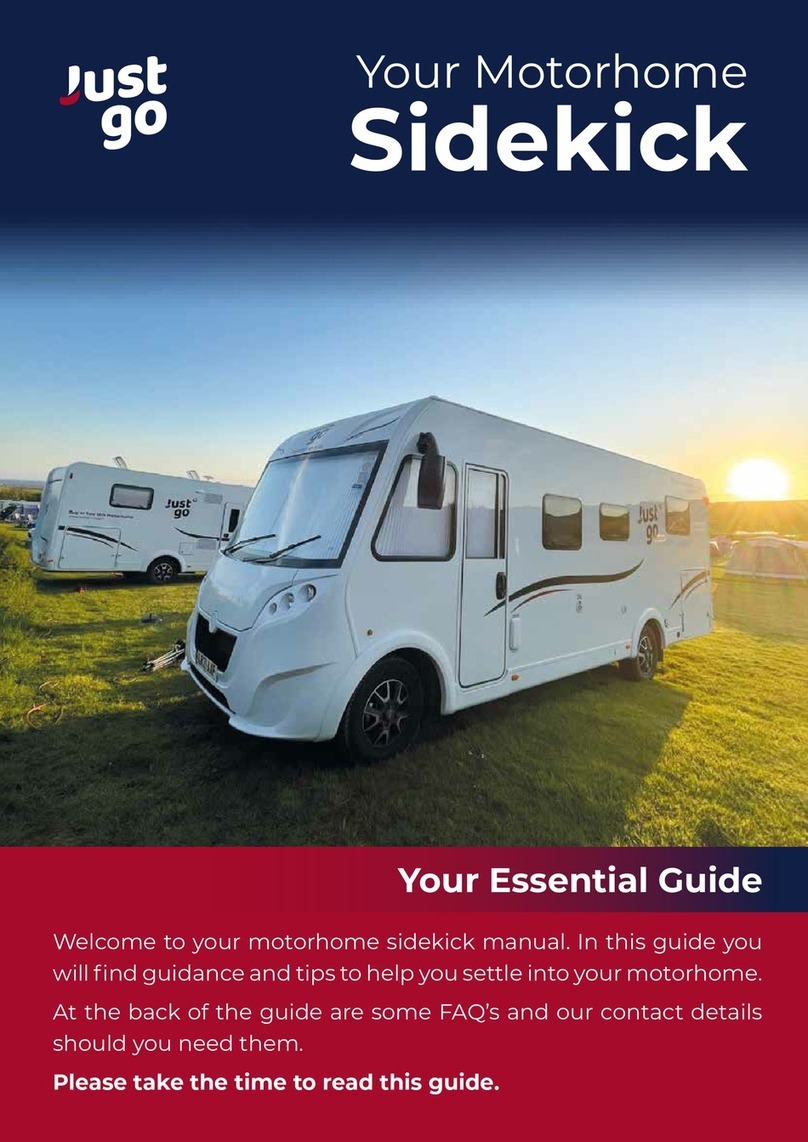
Just Go
Just Go Sidekick 2021 ESSENTIALS GUIDE
